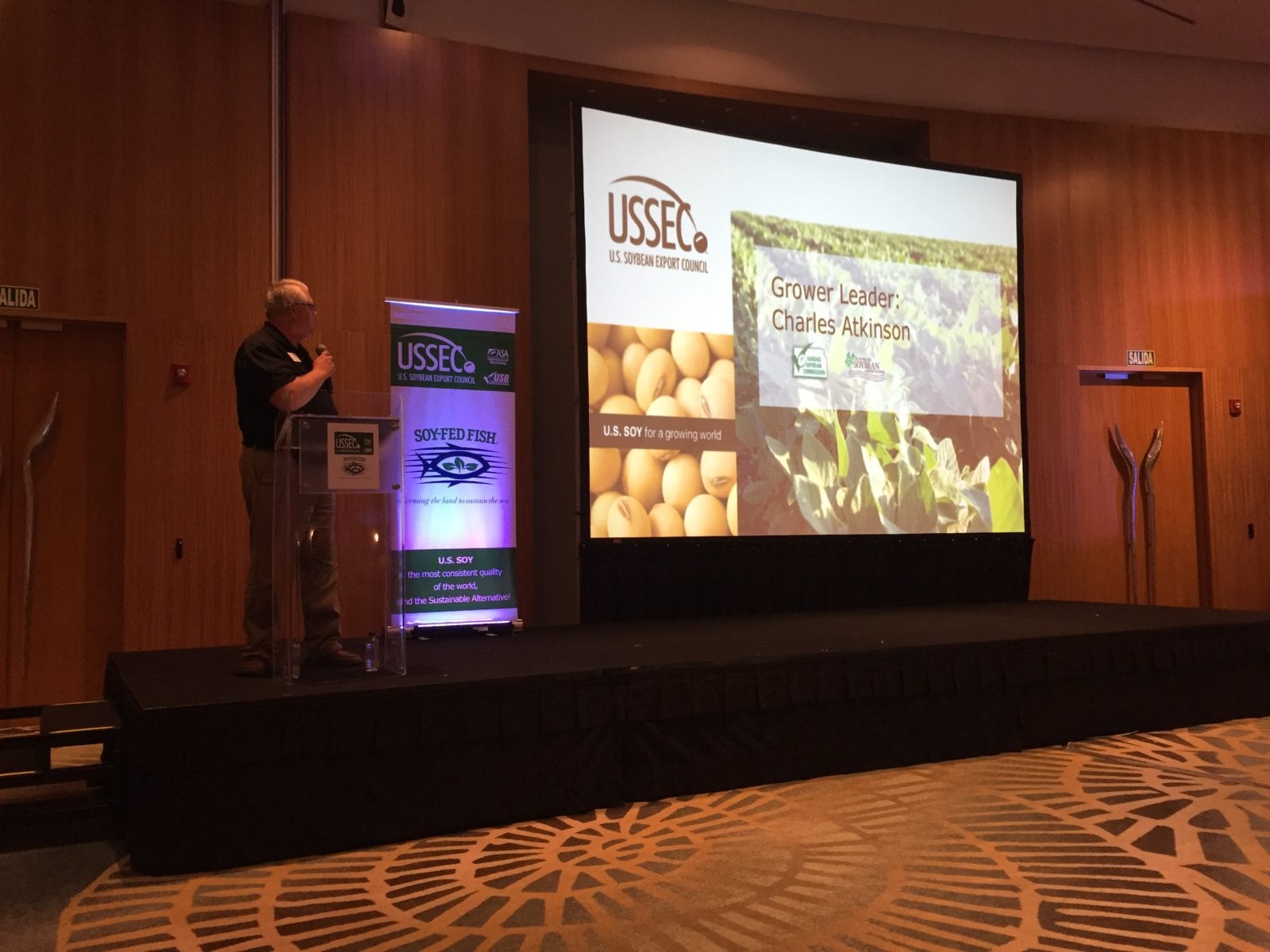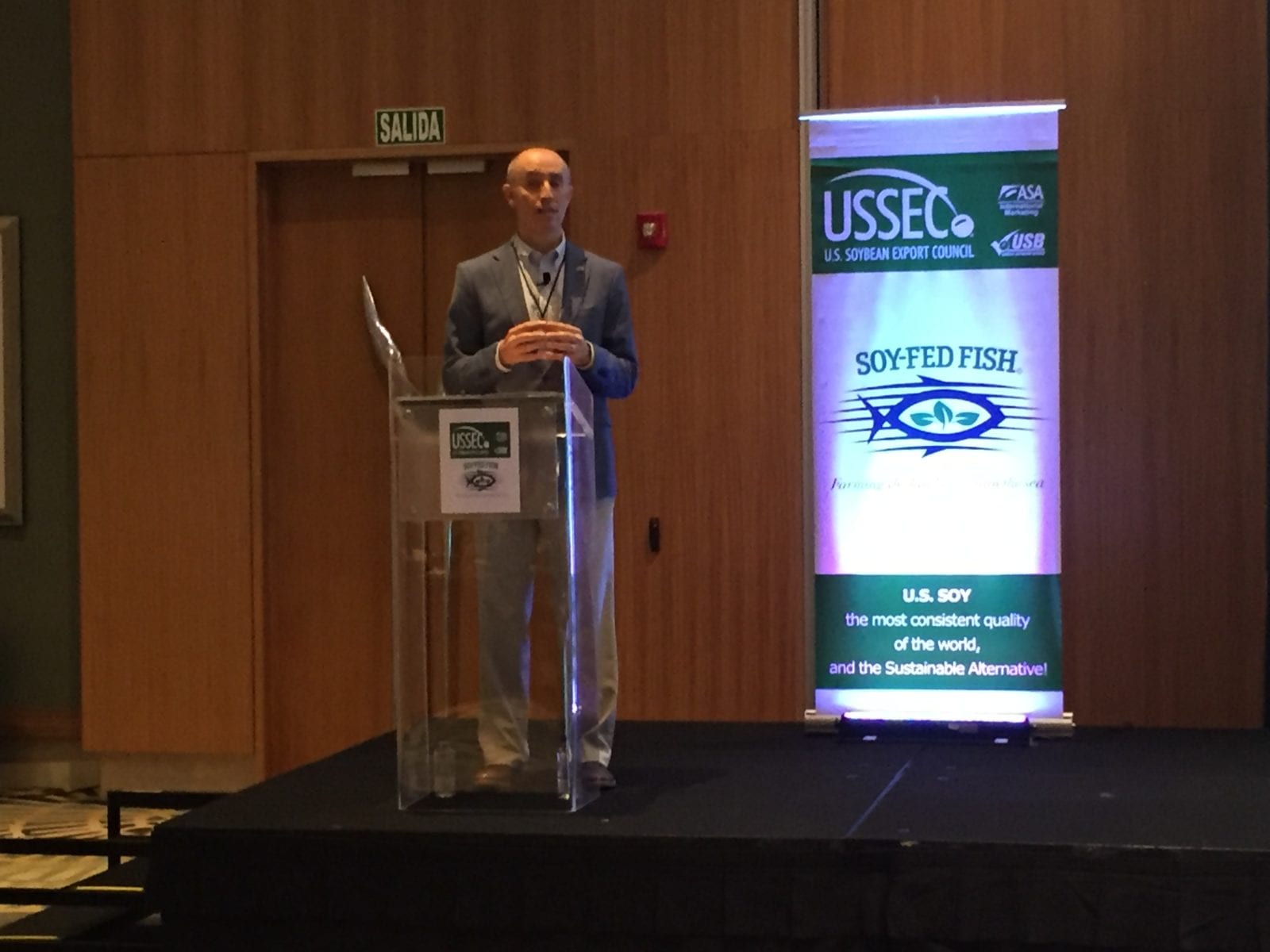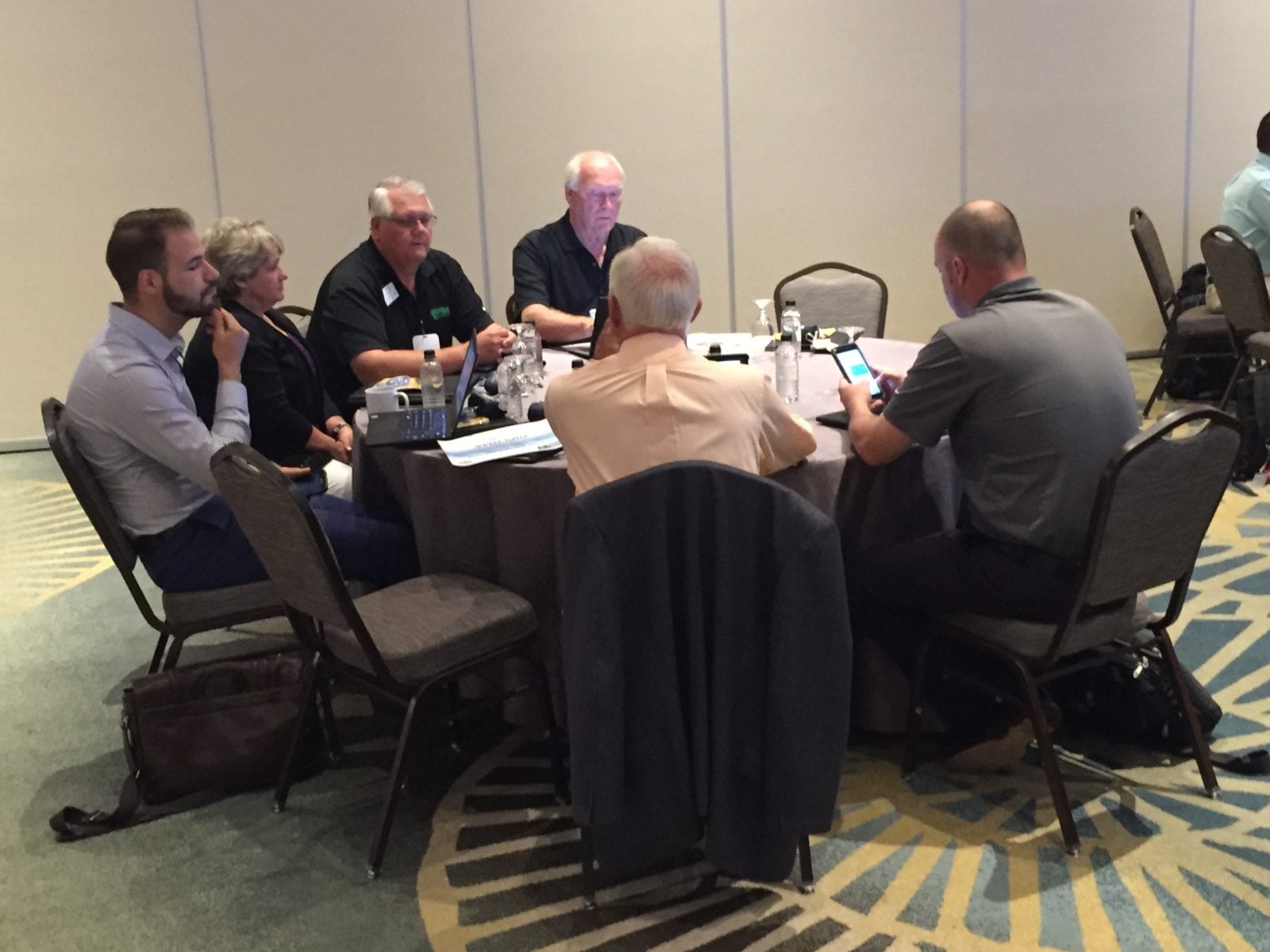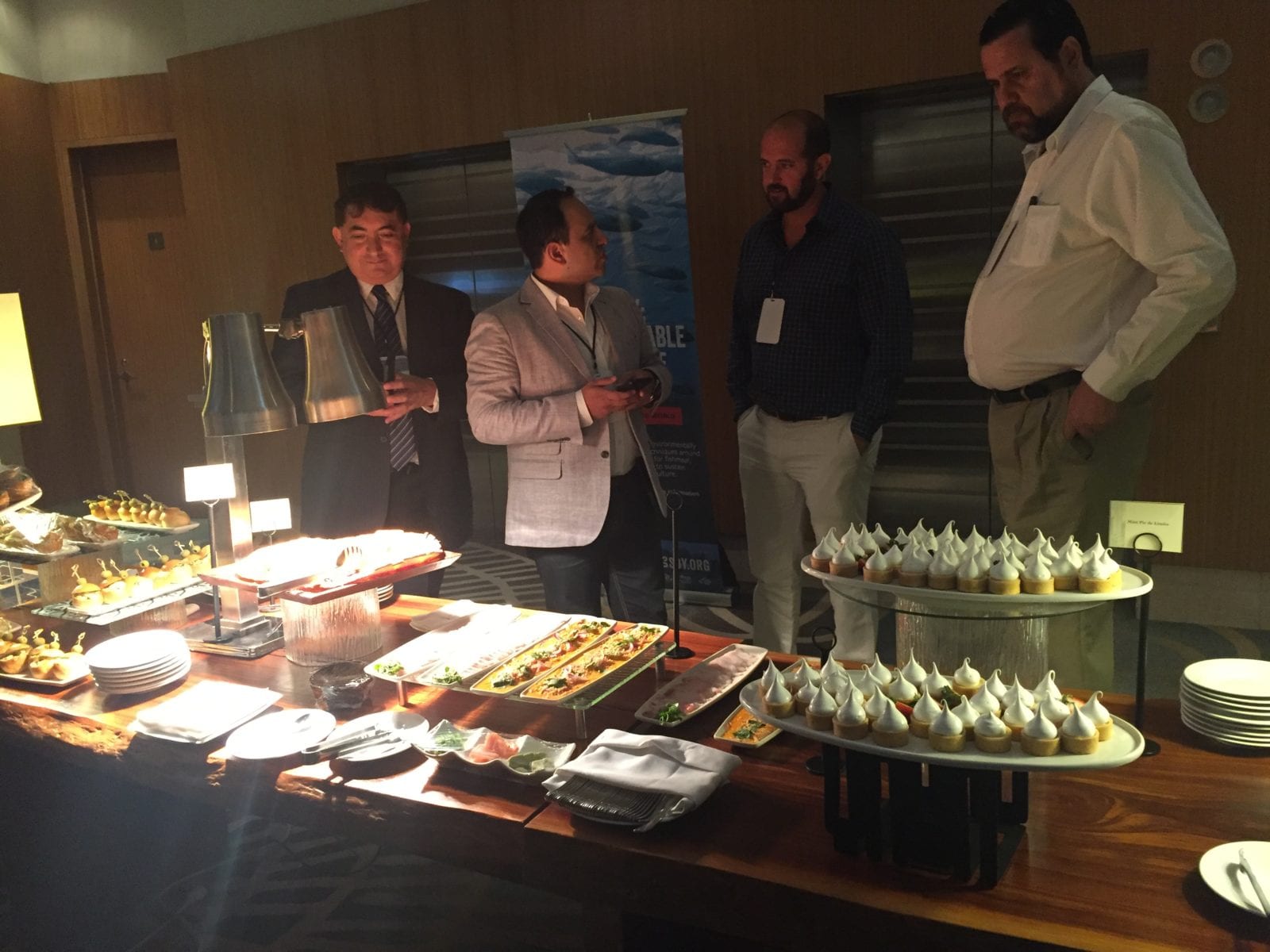Kansas Farmers Participate in 2017 V - USSEC-SAA Aquaculture Investment Workshop
- Category:
- Aquaculture
- General News

USSEC and the Soy Aquaculture Alliance (SAA) hosted the V-Aquaculture Investment Workshop in Panama City, Panama on June 13 and 14. More than 85 aqua industry participants (aqua producers, feed companies, government, seafood buyers, bankers, and technicians) from over 14 countries attended the specialized workshop. During those two days, more than 20 speakers invited by USSEC gave lectures and recommendations, and raised business to attendees, all related to aquaculture production, mainly marine fish culture.
This workshop was organized and designed by USSEC with the primary objective of bringing together the main aquaculture industry participants, including aqua producers, aquafeed producers, researchers, government officials, investors, and seafood importers from the U.S., to put forth the issues that may be delaying the expansion of the marine aquaculture industry and aquaculture as a whole, in the Americas region, as well as to define what can be done to accelerate expansion and creation of markets for these aquaculture products. This additional investment and efforts would grow the industry and increase future demand for U.S. Soy products in aquaculture.
The second objective was to present other alternatives in aquaculture production; that is, alternatives to tilapia and shrimp culture, such as commercially relevant marine fish species to private investors in the Americas region, as well as the investment community in the U.S.
USSEC hosted the two-day investment workshop to outline investment opportunities in all segments of the production and market chain. There were discussion sessions and panels during the seminar. Various topics were discussed, such as technical presentations by aqua experts, regulatory issues by government officials, investment opportunities by regional investors, investment funds available by venture capital investors, and market opportunities by buyers of seafood from the U.S. and the Americas region. Daily business sessions were provided to the participants, which helped achieve concrete opportunities for producers, buyers, technicians, and government officials.
These were the topics discussed during the presentations and panels:
The first day’s agenda focused on status, issues, and trends in global aquaculture production, as well as the mariculture status in Latin America. The experts reported on trends in production, financing, market regulation, and opportunities for the near future.
USSEC Aquaculture Consultant – Americas Jairo Amezquita welcomed the attendees and gave a summary of the event over the course of the two days and an overview of the U.S. Soy aquaculture program.
American Soybean Association (ASA) and Kansas Soybean Commission director Charles Atkinson and Kansas Soybean Association CEO Kenlon Johannes welcomed the participants and opened the workshop. Both talked about how Kansas contributes funds for these types of events by promoting the expansion and growth of new aquaculture options. They emphasized the need to produce sustainably and related the story of how soy producers do it.
Later, USSEC Stakeholder Relations Manager Will McNair said an ever-growing consumer expectation of sustainable products is pushing the U.S. Soy industry to get on board. He also announced that the U.S. Soybean Sustainability Assurance Protocol (SSAP) was recently given the thumbs-up by the Global Aquaculture Alliance´s (GAA) Best Aquaculture Practices (BAP). Andy Tauer, Interim Executive Director of SAA presented the aquaculture programs of the SAA in the U.S.
During the first section, topics were discussed that were related to the aquaculture industry’s global production, development plans, and the situation of the aquaculture industry both locally and globally. Dr. Francisco Saraiva Gomes from Pontos Aqua Holdings presented “Sustainable Investments in Aquaculture,” addressing the risk of execution and the next steps to develop the mariculture industry. Next, Beyhan de Jong from Rabobank presented the opportunities that the markets offer after the China´s change of trends from export to import with the lecture “The Dragon’s Changing Appetite and Its Impact on the Global Aquaculture Industry.”
Jesse Chappell, professor at Auburn University and creator of the Intensive Pond Aquaculture (IPA) technology, provided updates on new implantations, Southeast Asia (SEA), and upcoming installations in the Americas region. After that, some scientists presented aspects and opportunities of the mariculture projects in the region. The day finished with a panel discussion on technology challenges and opportunities.
Day two focused on aquaculture information from GAA and the Food and Agriculture Organization (FAO). Topics including offshore mariculture of the red drum and evolution of feeding systems and technologies were presented. Issues related to the latest developments in the market for aquaculture products, trends and expectations of supply, and global demand were also discussed. Case studies of successful marketing of seafood in the Mexico and the U.S. were presented. Banking experts and financial representatives addressed topics related to the financial opportunities available in the industry for investors interested in investing in the aquaculture industry. The issues related to investment risk that can be given to investing in this industry as well as the opportunities with insurers for the industry was another topic of conversation.
At the end, a general discussion panel comprised of experts, speakers, and guests addressed final conclusions and how to develop a letter of compromises over the next few years. The group concluded that opportunities for financing, correct regulation, environmental commitment, health transparency, innovation and efficiency, as well as product differentiation, will set the standards for a sustainable and profitable growth of mariculture in the Americas region.
Virtual reality tools related to Open Blue Sea Farms and Marine Fish operations were also presented.












